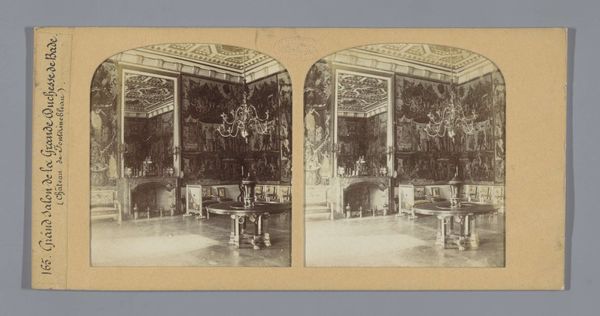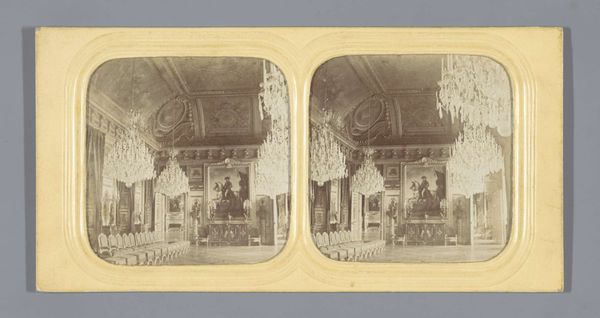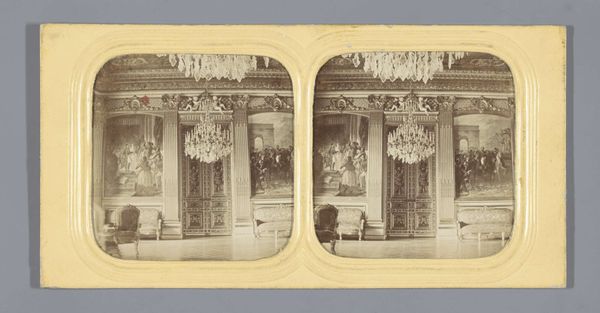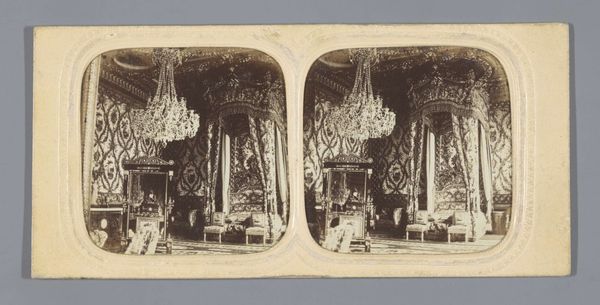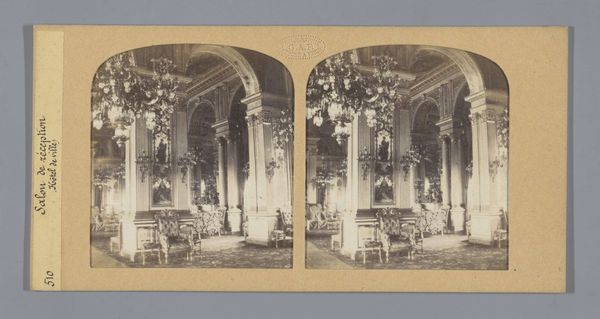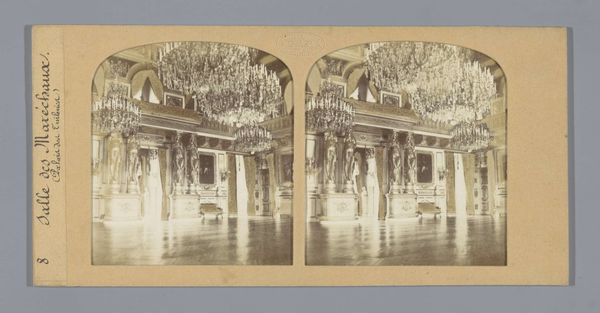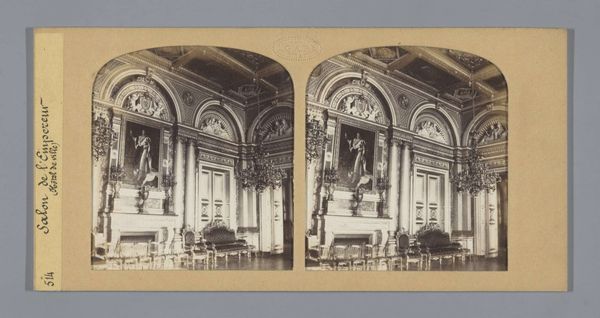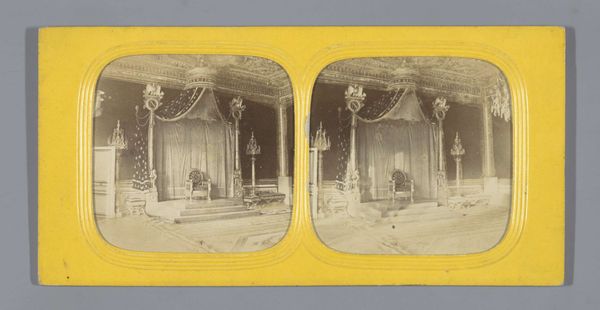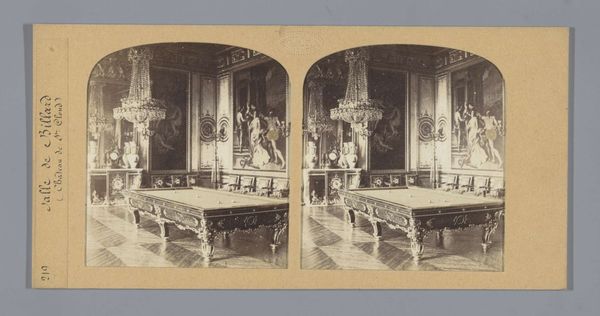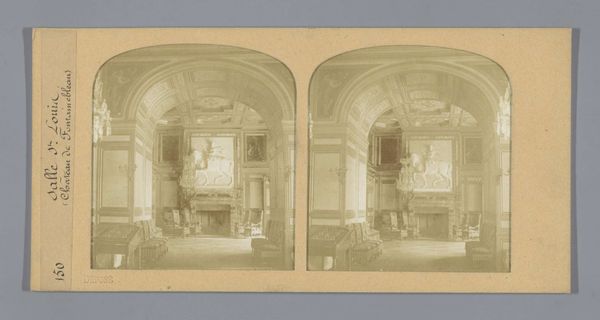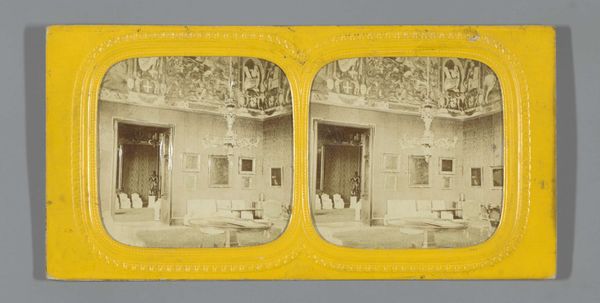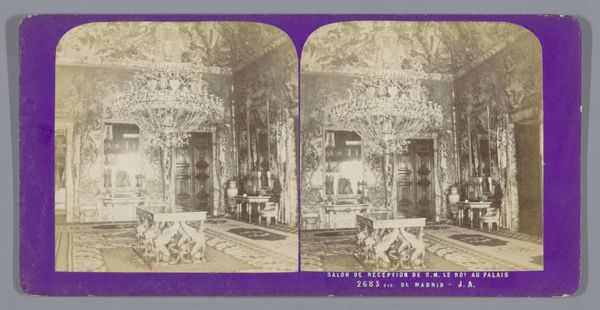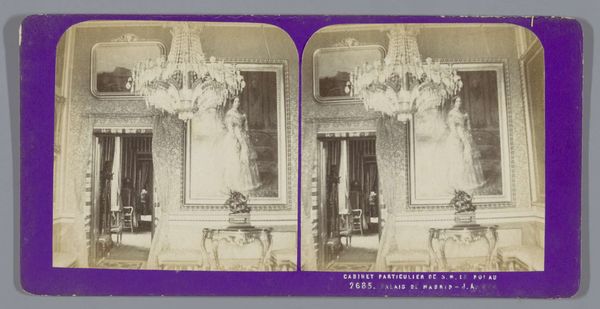
print, photography
# print
#
photography
#
orientalism
#
cityscape
#
genre-painting
#
realism
Dimensions: height 83 mm, width 168 mm
Copyright: Rijks Museum: Open Domain
Curator: My initial impression is the sheer theatricality, almost cinematic with the receding space emphasized through the double view. It looks like an early experiment in virtual reality! Editor: Indeed. We are viewing a stereoscopic print, a photograph created sometime between 1855 and 1864 by Florent Grau. The piece is titled “Salon des Arcades in het Hôtel de Ville, Parijs”, capturing the Salon des Arcades, which would have been a reception room, in the Parisian city hall. Stereoscopic photography was quite popular then, giving viewers at home a sense of depth and presence within a space they might never visit. Curator: You’re right about that heightened sense of presence! Grau employs classical elements in a quite academic approach – columns, symmetry and grandiose crystal chandeliers are very prevalent. Note the use of light and shadow; this almost monochromatic effect creates a somewhat cool mood for me. Editor: The coldness perhaps speaks to its function. The Hôtel de Ville wasn't simply a beautiful architectural accomplishment; it represented power, civic responsibility and municipal governance. Photographs like this played a vital role in constructing an image of a modern, sophisticated Paris, especially after Haussmann's renovations were underway. Imagine these images being circulated internationally, solidifying Paris's place as a leading cultural and political center. Curator: So, these visuals were less about capturing reality and more about cultivating and distributing an aspiration? And how successful do you find it to be? Even for us today? Editor: Exactly! Grau capitalises on a hyper-realistic reproduction that suggests impartiality but at the same time reinforces very controlled political messaging through its dissemination to specific audiences, especially wealthy consumers. The choice of such a grand space highlights not only Parisian grandeur but also subtly alludes to the civic institutions which it houses. Even now, I can perceive its intended political undertones – promoting the virtues of order and prosperity. Curator: I agree. The image offers insight into Parisian socio-political ambitions. Focusing on its architectural components—its light, composition, and depth—emphasizes the powerful role this image plays as a political symbol in France's cultural narrative during the mid-19th century. Editor: Precisely! Hopefully, these combined perspectives shed new light on appreciating the complex role that this seemingly simple photograph occupies.
Comments
No comments
Be the first to comment and join the conversation on the ultimate creative platform.

